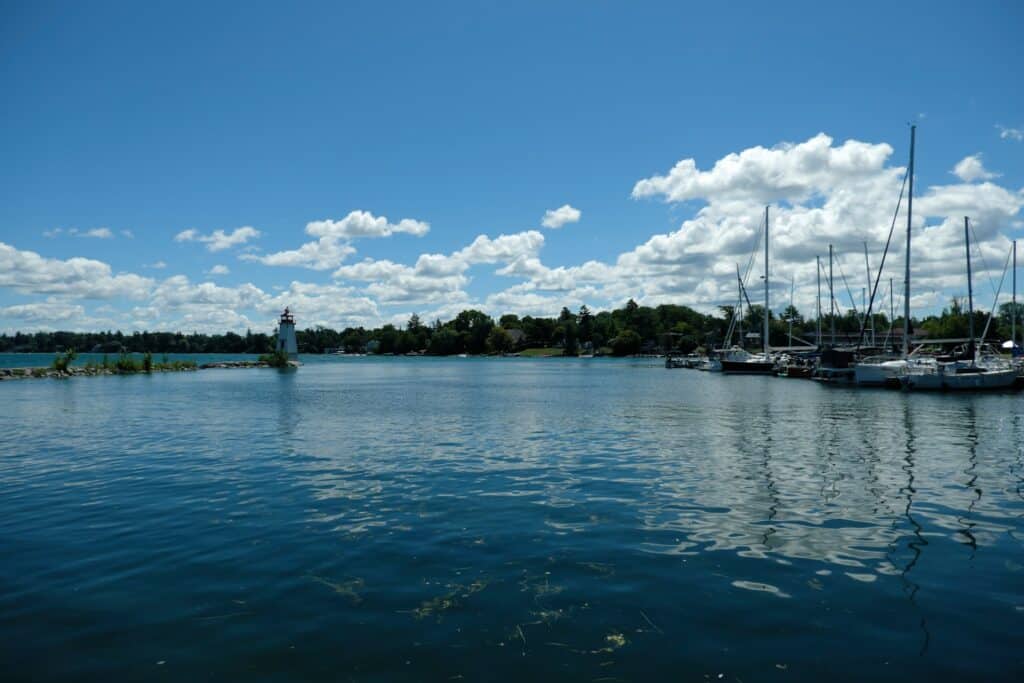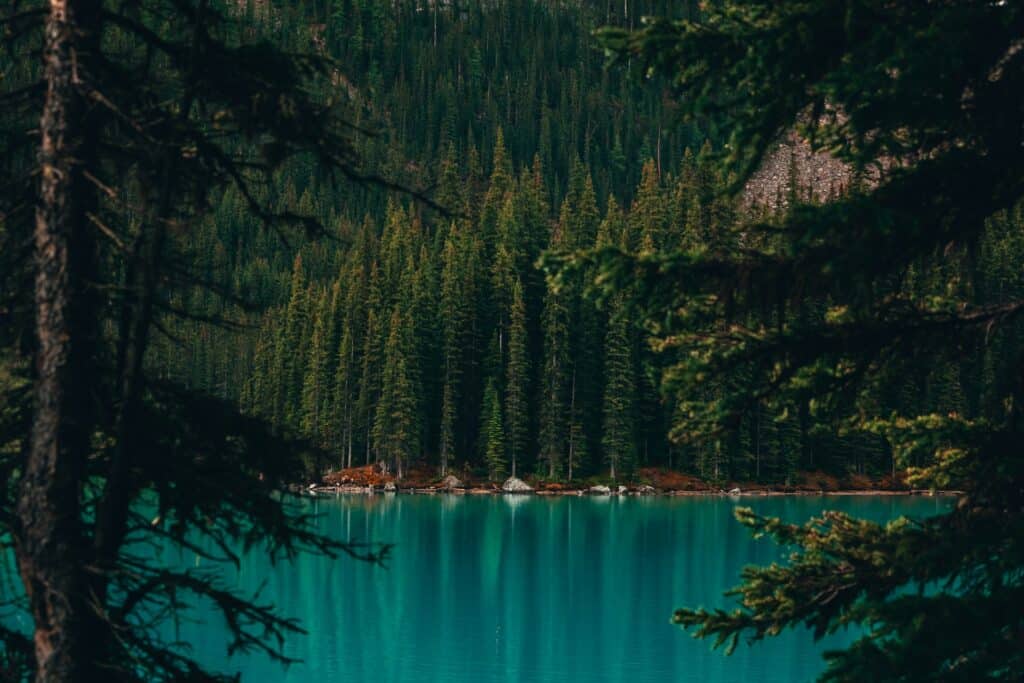Canoeing in Canadian lakes
Reading time: 7 minutes
Canoeing in Canadian Lakes: An Adventure in Nature
The image of a still, mirror-like expanse of water surrounded by dense forests and distant mountain peaks immediately evokes feelings of freedom and tranquility for many. Welcome to the world of canoeing on Canadian lakes: an experience that combines adventure, relaxation, and connection with nature. Whether you're a seasoned adventurer or a beginner looking to try something new, canoeing in Canada offers a unique experience for everyone. In this blog post, I'll take you on a journey into the world of canoeing on Canadian lakes. We'll discuss the most beautiful locations, practical tips, the benefits for body and mind, and why this adventure deserves a place on your bucket list.
Why canoeing in Canadian lakes is so special
Canada is one of the few places in the world where nature is so pure and untouched. With millions of lakes scattered across the country, it offers an experience you won't find anywhere else. Canoeing in these lakes means paddling through still waters, surrounded by vast forests, magnificent mountains, and breathtaking tranquility. Here, all you hear is the soft sound of your paddle, the song of birds, and perhaps the distant call of a loon, a water bird symbolic of the Canadian wilderness.
What makes this adventure even more special is the remoteness. You can paddle for hours without encountering another person, which gives a rare feeling of freedom. Whether you're paddling across tranquil glacial lakes in the Rocky Mountains or through a network of islands in Quebec The variety of landscapes is unparalleled. Each area has its own unique charm, from crystal-clear water to endless horizons, offering something unique for both beginners and experienced canoeists.
Canoeing on Canadian lakes also offers exceptional opportunities for wildlife spotting. From moose drinking along the banks to ospreys swooping in to catch a fish, nature is always close at hand. With a bit of luck, you might spot a beaver, a black bear, or even a wolf in the distance. The feeling of connection with this pristine environment is what makes canoeing in Canada so memorable.
Canoeing itself also holds a deeper significance in Canadian culture. For Indigenous peoples, the canoe was an essential means of transportation, enabling them to traverse the vast wilderness. Today, it's not just a means of travel but also a symbol of respect for and connection with nature. Canoeing in Canadian lakes is more than just an activity; it's a way to be part of the history and beauty of this unique country.
The best places to canoe in Canada
- Algonquin Provincial Park, Ontario
Algonquin is one of Canada's most iconic canoeing destinations. The park is dotted with more than 2,400 lakes and boasts an extensive network of trails and routes. Whether you're planning a day trip or a multi-day expedition, this park offers options for all skill levels. What makes it extra special are the opportunities to spot wildlife, such as beavers, moose, and even wolves. - Moraine Lake, Alberta
Located in Banff National ParkMoraine Lake is one of the most photographed lakes in Canada. Its turquoise waters, framed by the Ten Peaks, make paddling here a visual spectacle. Although smaller than some of the others, the spectacular scenery makes it a must-visit. - Bowron Lake Circuit, British Columbia
For the experienced canoeist it offers Bowron Lake Circuit A multi-day route of approximately 116 kilometers. This is one of the most famous canoe circuits in the world, combining tranquil lakes with challenging rivers. Along the way, you can camp in remote spots and enjoy the peace and quiet. - Lake Louise, Alberta
This world-famous lake is perfect for beginners and day trips. Its calm waters and iconic view of the Victoria Glacier make it a fantastic spot to hone your canoeing skills. - The Vérendrye Reserve, Quebec
This park is less well-known, but just as spectacular. With hundreds of islands and winding waterways, you can discover endless new places here. Perfect for those who want to avoid the crowds.

Preparation: what you need
To fully enjoy your canoeing adventure in Canada, proper preparation is essential. Here are some important things to keep in mind:
the right equipment
- CanoeChoose a canoe that suits your experience and the conditions. Lightweight canoes are ideal for longer trips.
- PaddlesA good paddle is crucial. Choose a length and material that suits your body and style.
- Life jacketSafety first! Make sure you wear a comfortable life jacket.
- Waterproof bags: Use these to keep your clothes, food, and other necessities dry.
essential accessories
- first aid kit
- Water filter or jerry can
- Maps and a compass (or GPS)
- Rain gear and warm layers
- Sunscreen and bug spray
skills
It's helpful to master basic skills like paddling techniques, navigation, and weather forecasting. If you're a beginner, consider taking a short course.
What makes canoeing sustainable and healthy
Canoeing combines the best of health and sustainability. It not only offers an active way to enjoy nature but also an opportunity to be environmentally conscious. Read on to find out why canoeing is so good for your body, mind, and the planet.
physical health
Canoeing is a great workout that works your entire upper body. The constant paddling strengthens your back, shoulders, arms, and core muscles, while putting minimal strain on your joints. This makes it an ideal activity for people of all ages. It also improves your endurance and cardiovascular health. The fresh air contributes to better oxygen transport throughout your body, boosting both your energy and your immune system.
mental health
Besides the physical benefits, canoeing has a strong positive effect on your mental health. The rhythmic sound of the paddle on the water and the surrounding silence are calming. Canoeing brings you into the moment, a natural form of mindfulness. This focus helps reduce stress and clear your mind. Research shows that spending time in nature not only improves your mood but also boosts your concentration and creativity.
sustainability
Canoeing is one of the most environmentally friendly forms of recreation. It leaves virtually no ecological footprint, as long as you respect nature. Without engines and fuel, there's no air or water pollution. By taking your trash with you, not damaging plants, and setting up camp according to Leave No Trace principles, you help preserve the natural beauty of lakes and forests. Canoeing reminds you how precious our planet is and how important it is to protect it.
Canoeing thus offers a perfect balance between personal health and ecological awareness. It's an activity that helps you connect with yourself, nature, and a more sustainable lifestyle.
Practical tips for a successful trip
- Plan your route
Choose a route that suits your experience and time. Use online maps and forums to understand what to expect. - Check the weather
Canada's weather can be unpredictable. Be prepared for rain, wind, and temperature drops. - Go in the morning
In the morning the waters are often calmest, and there is less chance of strong winds. - Leave your overview
Always let someone know where you are going and when you expect to be back, especially if you are going on a multi-day trip.

Camping along the lakes
One of the highlights of canoeing in Canada is the opportunity to camp in the wilderness. Many lakes have designated campsites, often only accessible by canoe. Make sure you set up camp according to Leave No Trace principles:
- Use existing fireplaces.
- Take all your rubbish with you.
- Respect the flora and fauna.
Wildlife and safety
Canada is known for its rich and diverse wildlife, which is one of the charms of wilderness canoeing. During your trip, you might encounter animals like ospreys, beavers, moose, and even bears. While these encounters are often magical, it's important to be well-prepared and prioritize safety.
Tips for staying safe in the wild
- Store food safelyMake sure your food is well-packed in sealed, odor-proof containers. Store these containers at least 50 meters from your sleeping area to keep curious animals, such as bears, at bay.
- Make noise while paddlingAnimals are often surprised by a silently approaching canoe. Make noise regularly, such as talking or ringing a bell, to avoid getting unexpectedly close.
- Respect natureAlways keep your distance from wild animals, no matter how friendly they seem. Getting too close can cause stress to the animal or be dangerous for you. Use binoculars to observe animals from a safe distance.
- Follow local guidelinesSpecific regulations may apply in some areas to protect both animals and visitors. Inform yourself about these regulations beforehand and adhere to them.
- Know the dangersLearn how to handle potential encounters with bears or other large animals. Carrying a bear bell or bear spray is recommended in some areas.
Respecting the natural environment and its inhabitants not only makes your experience safer but also more valuable. This allows you to enjoy the beauty of Canadian wildlife while preserving its pristine state.
Why this should be on your bucket list
Canoeing in Canada's lakes is more than just an activity; it's a life-changing experience. It brings you back to basics and lets you experience the power and beauty of nature as it was meant to be. Whether you're looking for adventure, relaxation, or a deeper understanding of the world around you, a canoe trip in Canada offers it all.
So what are you waiting for? Grab your paddle, put on your life jacket, and let the magic of the Canadian lakes carry you away. The adventure of a lifetime awaits!
What makes Canada such a special destination for wildlife?
Canada boasts an enormous biodiversity thanks to its vast landscapes of forests, mountains, lakes, and coastlines. You'll find unique animals like bears, moose, orcas, and wolves in their natural habitats.
Where is the best place to spot wildlife in Canada?
Banff and Jasper National Park (Alberta): grizzly bears and moose.
Churchill (Manitoba): polar bears and belugas.
Vancouver Island (British Columbia): orcas and whales.
Algonquin Provincial Park (Ontario): moose and beavers.
Cape Breton Highlands (Nova Scotia): sea eagles and whales.
Kluane National Park (Yukon): grizzly bears and caribou.
What animals can you see at Wildlife Canada?
You can see grizzly bears, black bears, polar bears, moose, caribou, orcas, whales, wolves, bald eagles, snowy owls and beavers, among others.
What are the best times to see wildlife in Canada?
Early morning and late evening are the best times, as animals are most active then. The season also plays a role, with polar bears appearing in the fall and whales in the summer.
How to stay safe while wildlife watching?
Always keep a safe distance from animals.
Store food well, especially in bear country.
Follow park rules and guidelines.
Do not make sudden movements near animals.
Carry bear spray in remote areas.
How can you experience wildlife in Canada in an environmentally friendly way?
Leave no trace and take all rubbish with you.
Respect the habitat of animals.
Choose sustainable tours and guides that take the environment into account.
Why should Wildlife Canada be on your bucket list?
It's a unique opportunity to see impressive animals in breathtaking landscapes. From bears in the Rockies to orcas along Vancouver Island, every wildlife encounter in Canada is unforgettable.
